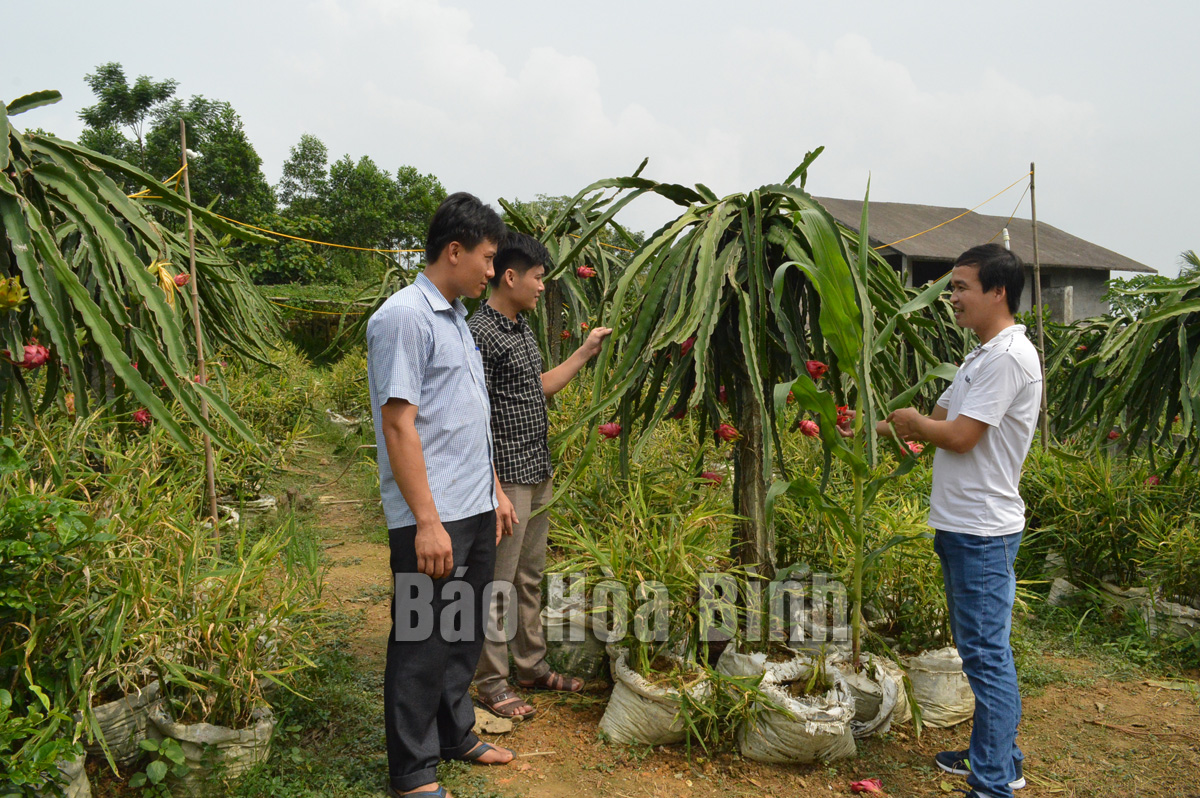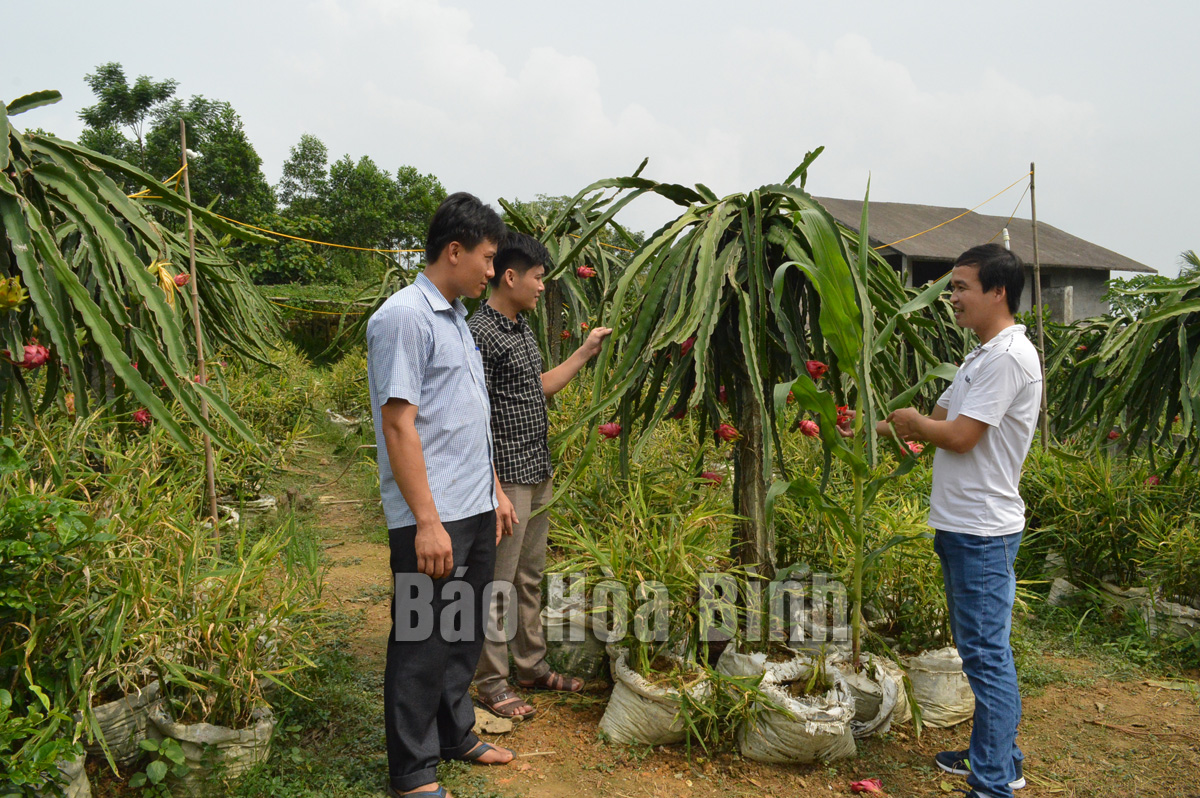
(HBO) – Hoa Binh province’s locomotive zone includes Hoa Binh city, Luong Son district and the north of Lac Thuy district. Aware that they will enjoy dynamic development, helping improve locals' material and spiritual lives, and stimulate economic growth in adjacent areas, the agriculture sector has paid attention to improving products' added value, economic efficiency and competitiveness to ensure production sustainability.

Photo: Residents in Cu Yen commune of Luong Son
district have reaped good profits thanks to dragon fruit farming development.
In localities in the locomotive zone, irrigation works
have supplied water to 11,171 ha of rice fields since the beginning of this
year, up 1,312 ha from 2017. The zone is now home to 325 irrigation works and
systems, up 49 works from 2017.
The localities have also formed and developed safe, indigenous vegetable farming
areas, promoted safe farming under VietGAP and food safety standards to meet
market demand. There are 30 production facilities on a total 410.52 ha meeting
food safety, VietGAP and organic standards.
The province has issued seven farming zone codes, including four banana and
dragon fruit cultivation zones for export to China and three pomelo farming
areas to export to Europe, and five codes for packaging facilities for export.
So far, the locomotive zone have shipped over 700 tonnes of banana to China,
and more than 50 tonnes of white and purple sugar canes to Europe.
Along with production development, further attention
has also been paid to raising awareness of environment protection in farming.
As many as 12 training courses have been held to disseminate legal regulations
to 4,000 people on the collection, transport and treating containers of plant
protection chemicals after use.
Additionally, vocational training and technological
transfer courses are held annually with more than 1,410 farmers taking part,
through which they gain new knowledge to meet socio-economic development
requirements in the new period and provide quality products for markets. So
far, 37 products in the One Commune, One Product (OCOP) programme in the zone
have met three-star and higher standards, or 37% of total OCOP products in the
province with nine products rated as four-star, and 28 three-star./.
According to data from the Hoa Binh Provincial Party Committee, the industrial production index for the first six months of 2025 is estimated to have increased by 20% compared to the same period last year. This marks the highest year-on-year growth rate for this period since 2020.
In the first six months of 2025, Hoa Binh province’s export turnover was estimated at 1.145 billion USD, marking an 18.11% increase compared to the same period in 2024. Import turnover was estimated at $ 804 million, a 17.15% increase, which helped the province maintain a positive trade balance.
The lives of the ethnic minority farmers in Tan Lac district have gradually improved thanks to the new directions in agricultural production. This is a testament to the collective strength fostered through the professional associations and groups implemented by various levels of the district’s Farmers’ Union.
With the motto the "product quality comes first,” after nearly one year of establishment and operation, Muong village’s Clean Food Agricultural and Commercial Cooperative, located in Cau Hamlet, Hung Son Commune (Kim Boi district), has launched reputable, high-quality agricultural products to the market that are well-received by consumers. The products such as Muong village’s pork sausage, salt-cured chicken, and salt-cured pork hocks have gradually carved out a place in the market and they are on the path to obtaining the OCOP certification.
In the past, the phrase "bumper harvest, rock-bottom prices" was a familiar refrain for Vietnamese farmers engaged in fragmented, small-scale agriculture. But today, a new spirit is emerging across rural areas of Hoa Binh province - one of collaboration, organisation, and collective economic models that provide a stable foundation for production.
Maintaining growing area codes and packing facility codes in accordance with regulations is a mandatory requirement for agricultural products to be eligible for export. Recently, the Department of Agriculture and Environment of Hoa Binh province has intensified technical supervision of designated farming areas and packing facilities to safeguard the "green passport" that enables its products to access international markets.



